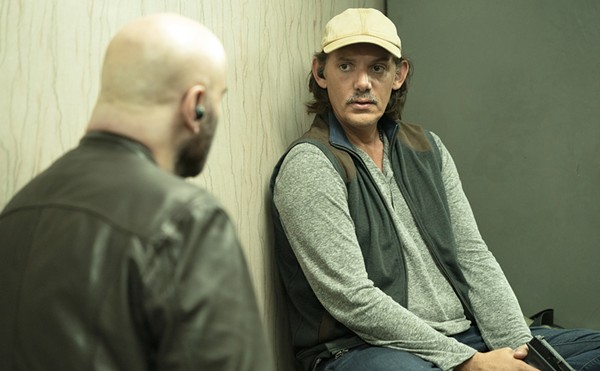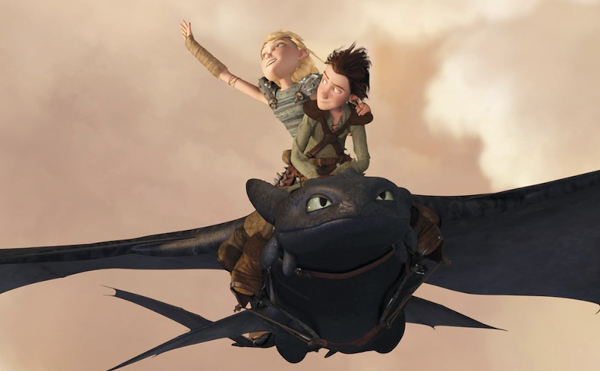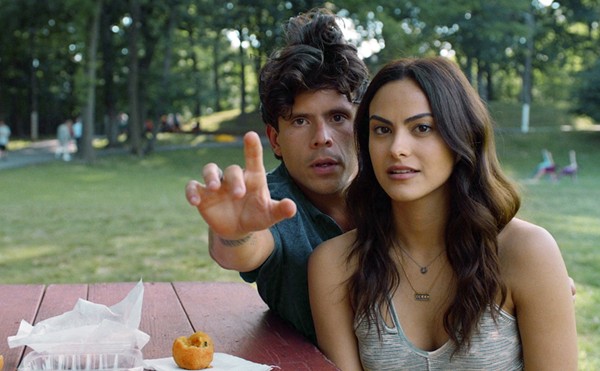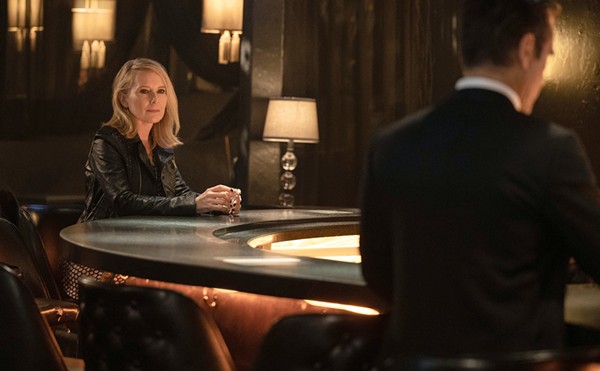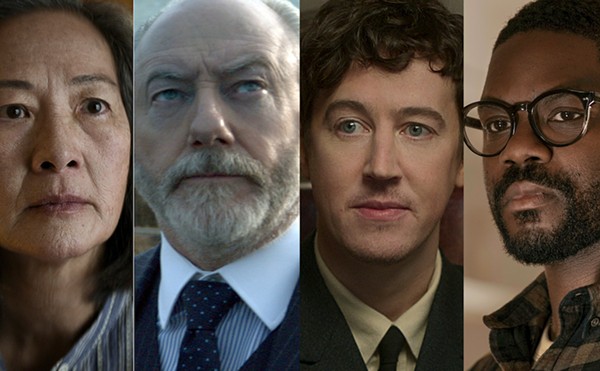Related: “Blackfish” Documentary Echoes Seaworld San Antonio Troubles
A slick black lump of blubbery flesh flops around on a ledge in a shallow pool of water while an audience—who’d come here to be entertained and, hopefully, educated—watches. Whether they’ll find the next few minutes entertaining is debatable, but they are about to get an education.
The rain is beating down on the pools at SeaWorld Orlando, so the show everyone’s come to see has been postponed. The trainers have headed indoors because the threat of lightning makes it potentially dangerous for them to be in the water. So the crowd’s attention settles on this one whale—a short-finned pilot whale, dark with a stubby nose—lying on the ledge. Some in the crowd seem to think he’s in distress, and they yell for somebody to help him. Nobody comes. Another whale pops out of the pool and touches the one on the ledge, making it look as if it’s trying to help—or encourage— the other whale back into the pool. A hysterical child screams for someone to help the “dolphin,” the crowd’s yelling becomes higher pitched and an adult male voice is heard swearing with anger.
A female voice comes over the loudspeaker: “Ladies and gentlemen, I do understand that you can see some whales sliding up over on our other pool,” she says, trying to calm the spectators. “They can get back into the pool. They do slide up on their own.”
But on this day, just last month, this particular whale doesn’t quickly slide back into the pool on its own. Instead, it bats its tail around and looks limp. One park-goer, Carlos De Leonibus, says he went to find staffers to ask them to help the stranded whale, but he was told it was fine. Eventually, staff members did have to go out to assist the whale back into the water. But in the meantime, De Leonibus videotaped the scene and put it up on YouTube, where it quickly went viral. Now it’s been shared via the Huffington Post, NBC News, the Daily News and other national media outlets, alongside interviews with De Leonibus saying that his family was horrified, his daughter traumatized. Hardly mentioned in most of the coverage is the fact that the formerly wild whale was found beached and stranded in South Florida last Labor Day and now lives at SeaWorld Orlando because it wasn’t deemed fit for survival on its own in the wild.
“The pilot whale shown in the video is not stranded or beached on the ledge at SeaWorld Orlando’s whale and dolphin stadium,” SeaWorld said in a statement released after outcry over the video reached a peak. “The whale was never in danger. This is social and play behavior our trainers see daily and sometimes hourly by the pilot whales. If you listen closely, the trainer on the microphone is trying to tell the audience just that.”
The incident came at a fairly inconvenient time for the theme park giant, which operates SeaWorlds in San Antonio, Orlando and San Diego. Just a couple of weeks ago, on July 19, Magnolia Pictures released a documentary film called Blackfish that puts SeaWorld in the hot seat. It’s a detailed exploration of the events and aftermath related to the 2010 death of SeaWorld Orlando trainer Dawn Brancheau, who was killed by a wild-caught orca whale named Tilikum. The massive whale pulled her underwater and battered her body during a normally lighthearted Dine with Shamu show. A horrified audience and her helpless coworkers witnessed the whole tragedy. Three years later, the publicly traded theme park giant is still battling with the Occupational Safety and Health Administration over citations and fines related to the incident—OSHA says the park willfully puts its trainers in harm’s way on a regular basis. SeaWorld insists that safety is its first priority. Blackfish challenges that assertion.
The movie features former SeaWorld trainers, marine mammal experts and eyewitnesses who place blame on the park for how it handles its animals and their interactions with trainers. Conspicuously missing from the film, though, is any interview or comment from SeaWorld higher ups. Blackfish director Gabriela Cowperthwaite says she reached out to the park to participate, but her request was denied. Instead, in a rather unusual PR move, SeaWorld waited until just before the documentary was to be released, then sent a scathing letter to film critics that countered many of the points raised in the movie.
The documentary causes the audience to question whether SeaWorld, a publicly traded company valued at $2.5 billion during its IPO in April, is doing more harm than good to the killer whales it keeps in captivity. SeaWorld says the film is little more than an advocacy piece—animal-rights propaganda—but it’s up to audiences to decide for themselves: Is this multi-billion dollar company whose mantra is education via entertainment, doing its business for the good of the whales, or is it making its money, literally, off their backs?
•••••
The SeaWorld parks are owned by private capital firm the Blackstone Group, which has amassed a total of 11 amusement parks under the SeaWorld Parks & Entertainment banner. In addition to SeaWorld, the most lauded and well-loved marine-mammal entertainment complex in the world, the company also owns Busch Gardens in Tampa, Fla., and Williamsburg, Va., Adventure Island in Tampa, Fla. and Sesame Place in Langhorne, Pa.
Though the SeaWorld parks are wildly popular and had an astoundingly profitable year in 2012, they’ve never been able to quite shake the bad publicity (or federal enforcement actions) that came in the wake of Brancheau’s death.
In early July, OSHA slapped SeaWorld with a fine of $38,500 for what it says is a “repeat violation” of continuing to operate a work environment that could “cause death or serious physical harm” to employees who work with killer whales. The company fired back at OSHA by pointing out that the citations are under appeal and that it voluntarily made changes to how trainers interact with killer whales immediately after Brancheau was killed. “OSHA’s enforcement activities and the new citation demonstrate the agency’s continued and fundamental misunderstanding of how to properly and safely care for and work around these animals,” the company responded.
Until recently, that claim—that nobody understood the work SeaWorld was doing except SeaWorld—was virtually unassailable. But increasingly, particularly after the death of Brancheau, SeaWorld and its business model have been scrutinized by a rash of journalists, marine-mammal experts and authors—even some former SeaWorld trainers. They insist that SeaWorld, which has always operated under the premise that its goal is to use entertainment to educate the public and rehabilitate wildlife, is doing the animals, the public and its employees a disservice by holding highly intelligent marine mammals (killer whales in particular) in captivity, expecting them to perform daily and not providing them with enough space, freedom or stimulation to lead anything resembling natural lives. As a result, some say, the frustrated whales are stir crazy and under-stimulated, which makes it even more dangerous for employees to interact with them. The voices of the critics have long been on the margin, and it’s been easy to dismiss them as animal-rights activists or clueless but well-meaning do-gooders. In the parlance of marine-mammal workers, they’re just “anti-caps”—people who simply don’t believe in keeping killer whales or other marine mammals in captivity for human enjoyment, even if there is a noble goal in mind.
But Blackfish, which premiered at Sundance in January and is making its debut in San Antonio at the Bijou on Aug. 9—could bring more weight (and attention) to SeaWorld’s detractors. And clearly, SeaWorld knows it. In an attempt to do damage control before the film was even released, the company hired Manhattan PR firm 42West to help it discredit Blackfish before it got out to the public. In the letter, SeaWorld vice president of communications Fred Jacobs calls Blackfish “shamefully dishonest, deliberately misleading and scientifically inaccurate” and lists multiple complaints about the film. The takeaway is that the movie places its agenda—raising awareness about killer whales held in captivity and how SeaWorld’s policies put trainers in harm’s way—over accuracy. “What Blackfish presents as unvarnished reality is anything but,” the letter insists.
But Blackfish isn’t a film made by animal-rights activists. Rather, it was directed by California filmmaker Cowperthwaite, a veteran documentarian who’s written and produced pieces for National Geographic, Discovery, Animal Planet and the History Channel. She’s been embedded with the Marines and she’s trained her lens on disasters and kids in inner-city neighborhoods. Despite making what SeaWorld dismisses as an “emotionally moving piece of advocacy,” Cowperthwaite says she never set out to create an activist film. In a director’s interview with Sundance, Cowperthwaite says she wanted to create a “detailed, truthful narrative” that would “show, not tell” her audience a story about the death of Dawn Brancheau. She was drawn to the idea of doing a piece about a woman who dedicated her life to working with animals, only to be killed by one of the killer whales she was devoted to.
“I read everything I could about it, because it was a very tragic but very confusing incident to me,” Cowperthwaite says. “I didn’t know that things like this happened, I guess. I thought that killer whales were loving animals that bonded with their human trainers, and I think that was what confused me, especially when I learned that, you know, the more I read about the incident, the more I realized that this was not an accident. So that was kind of my entry point into making the documentary: Me in search of an answer.”
But she quickly learned that SeaWorld wasn’t interested in giving her any answers. “They had told me that it was likely, at one point, that I would be granted an interview,” Cowperthwaite says, “and I was very excited, thinking this would be a great chance to hear everything from their side of the story.
But they then declined, and I was disappointed.” (SeaWorld’s Jacobs said in an interview that he has “no recollection” of ever promising an interview at all.)
Instead, SeaWorld waited until just before Blackfish opened in theaters and went on the offensive. It dissected the movie, point-by-point, denying some of the film’s key critiques of SeaWorld (one point in dispute: that killer whales live longer in the wild than in captivity, which SeaWorld says is not proven) and even some points that aren’t really addressed in the movie at all—for instance, SeaWorld’s letter denies what it calls the “insinuation that SeaWorld stocks its parks with killer whales captured from the wild,” though the film makes it clear that most of the whales at the parks are captive-born.
“It makes no attempt to tell the story of SeaWorld or killer whale display in a complete, objective and honest way,” Jacobs says. “The film focuses on a handful of incidents over our 50-year history at the exclusion of everything else. People have been interacting with marine mammals at SeaWorld parks hundreds of times a day, every day, for nearly five decades. If Blackfish were interested in a complete, fair and unbiased view of the zoological display of killer whales, it would have mentioned that fact. It doesn’t because it is something closer to animal rights propaganda than journalism,” Jacobs claims, though whether audiences buy SeaWorld’s point-of-view remains to be seen.
•••••
SeaWorld’s public scorn of Blackfish has been a public relations bonanza for the little independent film, which is suddenly on the tip of everyone’s tongue as “that movie about SeaWorld” and has the “anti-cap” and “pro-cap” camps jabbing at one another on Facebook, and in comment threads on stories and blogs around the Internet. But the film itself, critical as it may be, is far less inflammatory than the pre-emptive posturing that’s gone before it.
It begins auspiciously enough, with former SeaWorld trainers talking about how they’d come to work at the parks, their love for the killer whales they trained, the joy of being able to develop deep bonds with massive, intelligent beasts. But after multiple montages of happy people interacting with compliant whales, the film gives viewers a glimpse of something more troubling. Trainers talk candidly about how they got into the business, and, in perhaps one of the most surprising revelations made by the film, they discuss just how little experience some of the trainers had before being hired to work at SeaWorld. “I always thought you needed a master’s degree in, like, marine biology to be a trainer,” says Carol Ray, who worked at SeaWorld from 1987 until 1990. “Come to find out, it really is more about your personality and how good you can swim.” Other trainers talk about being bright-eyed-and-bushy-tailed newbies who got dream jobs at SeaWorld, with little care, concern or understanding of just how fragile the relationship between human beings and killer whales could be. After showing some clips of Dawn Brancheau at work, a fellow trainer recalls: “She had so much experience, and it made me realize that what happened to her could happen to anyone.”
The film then quickly moves into darker territory, with former trainers including Ray, Samantha Berg and Jeffrey Ventre providing first-hand accounts of baby whales being separated from their mothers at SeaWorld parks, large adult whales being kept in isolation in concrete pools with nothing to interact with, whales expressing frustration and boredom by acting out, and perhaps most chilling, events leading up to Brancheau’s death—a death these trainers clearly believe could have been avoided if SeaWorld were more invested in animal welfare and trainer safety than in ticket sales.
Critics of the film point out that most of the former trainers interviewed haven’t been with SeaWorld for years—many of them were gone by the mid-1990s, more than a decade before Tilikum dragged Brancheau under the water to her death. But there’s one trainer interviewed in the movie, 39-year-old John Hargrove, who was with SeaWorld in San Antonio until just last year. He says Brancheau’s death and its aftermath was the breaking point that drove him to finally sever ties with the company in 2012. In an interview, he acknowledged he had been “disenchanted” with various things happening in the parks during his tenure there (he worked with killer whales for 14 years, eight of which were at SeaWorld parks), but it all came to a head for him when Brancheau died. He says he realized that, despite the husbandry and care the animals receive, and having trainers that cared for them deeply, the whales at SeaWorld parks were not getting what they needed to live happy, healthy lives. And SeaWorld, he determined, was unlikely to ever agree.
For instance, Hargrove says, SeaWorld boasts that it has a top-notch veterinary program for its whales—and it does—but that’s because it needs to. Hargrove claims that captive whales routinely break their teeth banging on metal gates. They become ill frequently and die of infections. They peel paint off the walls of their holding pools. They injure one another and sometimes fight.
“There’s a lot of boredom,” he says. “It’s such a sterile environment. When you step down to those whales and interact with them, you can make it stimulating for them, but there’s only so much time you’re down there with them. Even the amount of time we’re not there at night—they’re just in these concrete pools and there’s no environmental enrichment for them for hours and hours and hours.”
Jacobs flatly denies this: “That claim is untrue, and it reflects the agenda that drives this film,” he says. “Our zoological staff provides enrichment for these animals continually. SeaWorld trainers have developed hundreds of toys and other enrichment devices that the animals play with when they’re not resting, exercising, undergoing husbandry and veterinary care, or participating in the training process or shows.”
The film implies that as a result of extreme boredom, frustration and poor health, some of the whales act out—though 80 percent of the whales at SeaWorld facilities were captive- born, many of those interviewed for the documentary say the needs of these apex predators cannot be met living in pools and doing shows for cheering audiences. One could quickly draw the conclusion that Tilikum, the whale who killed Brancheau and one of the few wild-caught whales owned by SeaWorld, did so in part because of his environment—an insinuation that SeaWorld has a huge issue with. To this day, the park insists that Tilikum didn’t intend to hurt Brancheau at all: “Tilikum did not attack Dawn,” SeaWorld’s letter to film critics insists. “All evidence indicates that Tilikum became interested in the novelty of Dawn’s ponytail in his environment and, as a result, he grabbed it and pulled her into the water.”
However, numerous witnesses and video evidence suggests that Brancheau was pulled by the arm, not the ponytail.
Though neither Cowperthwaite nor Hargrove say they consider themselves activists (Hargrove calls himself an “advocate”), there is one notion that permeates Blackfish: “At this point, I do not believe that killer whales should be kept in captivity,” Hargrove says. “SeaWorld is the largest in the world, they definitely have the most money, but it’s still not enough. Especially since they don’t give that money back to the animals that are helping them to make a profit.”
At this stage, it’s not likely that SeaWorld will give up its killer whales. As a publicly traded entity, the company is obligated to make money for its shareholders, and in its SEC filings, the killer whale shows are an integral part of the park’s business model—the filings boast that the parks own the largest captive killer world population in the world (29 whales), run an innovative killer whale breeding program and, of course, produce live whale shows featuring the “iconic” Shamu.
To eliminate these giants would be to eliminate one of the main things that makes SeaWorld a unique and attractive investment.
In fact, Hargrove says, over the past few years the park has actually increased its artificial insemination program, to his dismay: “So now there’s more whales and less space in aging facilities from the 1980s,” he says. He claims he understands that SeaWorld can’t just release its captive whales into the wild, but he thinks the company should be enlightened enough to recognize that keeping killer whales in captivity forever isn’t in the animals’ best interests. “First, we strip these animals from the ocean, now we forcibly inseminate them, and we do it just for profit,” he says. “It just doesn’t fit with 2013. I think people will realize that when they see the film. … And for SeaWorld, I want them to respond by giving these whales bigger and better pools with more enrichment. And I want them to stop the breeding program, so we don’t have these killer whales in captivity forever.”
Cowperthwaite shares his sentiments, but she says her movie’s intent is not to drive home an agenda. Rather, she says, she wants people to draw their own conclusions: “I believe that killer whales are absolutely not suited to captivity,” she says, “that SeaWorld needs to be urged to end its captive breeding program and eventually phase out killer whales in captivity. … If my film can be an agent of change, I’m honored, but my intention when I made it was just simply to tell the truth. And I have to trust my audiences that once they see it, they’re going to make good decisions for themselves and their families.”
Blackfish
Dir. Gabriela Cowperthwaite; writ. Gabriela Cowperthwaite, Eli B. Despres; feat. Samantha Berg, Dave Duffus, Dean Gomersall (PG-13)
Opens Aug. 9 at the Bijou





